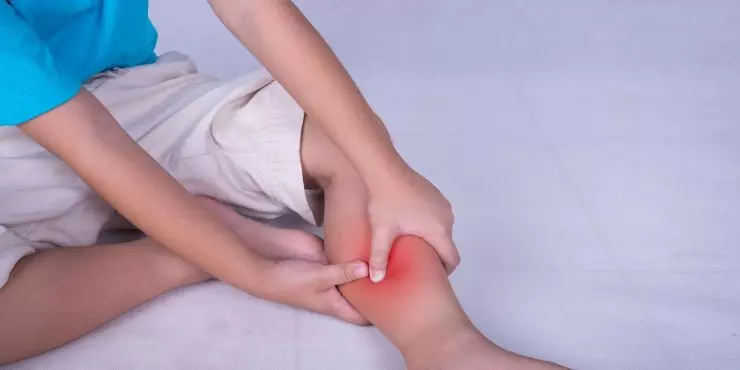What’s the Doc say?”

“There were a few nights when my son was about 4 years old that he complained of his legs hurting (while holding his calf muscles). Of course, being a doctor I immediately thought of bad things that might be causing his discomfort. But I was reassured because he did not have joint pain, swelling, redness or fever, and the pain was gone by morning. Thankfully, his discomfort lasted only a short time and was probably from a big day of activity (after a day at the park or T-ball) and was due to muscle soreness (growing pains). I massaged his legs and he fell right to sleep.”
Dr. Holly Stenzel-Taynton, MD
Northwest Family Clinics
Crystal, MN

As our little ones begin to grow, you may notice that they have sudden growth spurts that may appear to cause discomfort. These are known as growing pains. They frequently occur in toddlers ages 3-4 and pre-teens ages 8-12, when some of the most significant skeletal changes are happening. Research, however, shows little evidence that sudden growth spurts cause this discomfort. It is more than likely attributed to increased muscle wear and tear in a body that changes and moves in new ways. For example, if your child has had an abnormally active day of running and jumping, growing pains may result from this overuse.
Understanding Growing Pains – The Symptoms
While different for every child, growing pains are typically characterized by cramping, throbbing, and aching in both legs. This discomfort commonly occurs late in the day and may even awake your child in the middle of the night.
Longevity of Symptoms
Symptoms generally are not experienced every day and will come and go. They can be present for months or even years. It is important to talk to your doctor to receive a proper diagnosis before assuming your child’s symptoms are just growing pains.
Treatment Options
There is no specific treatment for growing pains, but the following may help ease the discomfort:
- Massaging the legs
- Stretching
- Applying a warm compress to the area
- Over-the-counter pain medication like acetaminophen or ibuprofen
When to See a Doctor
No one wants to see their child in pain, and we believe it’s better to be safe and see your doctor if you have concerns about your child’s discomfort level. Generally, you will want to see a doctor if:
- Persistent – symptoms appear to worsen or are occurring regularly
- Present in the morning or throughout the day
- Interfering with your child’s everyday daily life
- Local to the joint areas
- Resulting from an injury
- Experienced with other symptoms such as fatigue, limping, fever, weakness, etc.